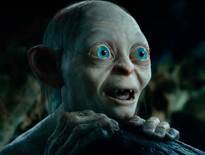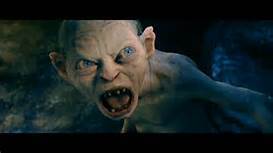Storytelling: Books vs Movie Adaptations
The first time I usually hear about trendy books is when they’re being made into movies. Then, in preparation, I read the book, all excited to see how the director is going to translate it into film. But more times than not, I wind up losing any interest in it.
Why? Not because movie adaptations are notoriously bad. I think in recent years directors and producers have worked very hard to make movies with excellent production design, charismatic casts, and a script that respects the original work.
But more times than not, the movies are merely serviceable. They cling to the notion that being faithful to the novel is the best approach, which gives the director little leeway to visually interpret the work.
For example, John Green’s The Fault in Our Stars has an emotional resonance which comes through Hazel’s first-person narration. The movie opts for the same technique, but by having the voice-over tell us what Hazel is thinking, it ends up spoon-feeding the audience. It’s not that voice-over is always a bad choice, but I can’t help but wonder what else the director might have done if he hadn’t been saddled with sticking so closely to the book.
In contrast, look at Fight Club. Edward Norton’s narration overlays visually interesting scenes. One of my favorite moments is his sweeping gaze of his Ikea-ridden apartment, with the superimposed price tags on every item of furniture. In Palahniuk’s novel, that sort of covetousness is handled in the storytelling, while in the movie, the director David Fincher uses a visual shorthand instead. It’s not that one technique is better than the other; it’s that a novel has one way of telling a story and a movie has another.
Probably my all-time favorite book-to-movie adaptation is The Lord of the Rings. While I have no doubt that Tolkien would not have thought much of Peter Jackson’s films, they must tap into something Middle-Earthian for fans to be so enthralled.
In the second chapter of The Fellowship of the Ring, Gandalf provides a lengthy exposition on the One Ring. Just as Frodo is being taught the complicated history, so too is the reader. By frontloading the backstory, Tolkien is setting the stage. Then Gandalf introduces how Gollum came upon the ring and the devastating effects it has on him. Having already appeared in The Hobbit, Gollum is a familiar character to the reader and serves as a narrative bridge between the two works.
But Peter Jackson doesn’t do this in his films. Instead, he intimates pieces of Gollum’s story but waits to actually show it. As the films progress, they become visually darker – vibrant colors are replaced by pervasive grays. Frodo and Sam start off in the pastoral beauty of the Shire before trudging through the unsettling bleakness of Mordor. Everything looks grim.
 It's a wonderful adaptation!In the prologue to The Return of the King, suddenly we’re back in a beautiful green meadow, with two Hobbit-like individuals – Smeagol and Deagol – fishing from a rowboat. Deagol falls into the river and discovers in the mud the One Ring. Now we witness Smeagol’s downfall: he murders Deagol for the ring, goes mad, hides himself beneath the Misty Mountains. He becomes Gollum. In the space of those few minutes, the color washes from luscious green to despairing gray. In other words, the prologue is a visual template for Frodo’s own trajectory, should he fail to destroy the ring.
It's a wonderful adaptation!In the prologue to The Return of the King, suddenly we’re back in a beautiful green meadow, with two Hobbit-like individuals – Smeagol and Deagol – fishing from a rowboat. Deagol falls into the river and discovers in the mud the One Ring. Now we witness Smeagol’s downfall: he murders Deagol for the ring, goes mad, hides himself beneath the Misty Mountains. He becomes Gollum. In the space of those few minutes, the color washes from luscious green to despairing gray. In other words, the prologue is a visual template for Frodo’s own trajectory, should he fail to destroy the ring.
 They changed things!
They changed things!
It's not exactly like the book!So, why does Jackson move the story around? If he had stayed true to Tolkien’s story structure – if he had told Gollum’s tale at the beginning of the first movie – there would have been too long a gap before the viewer sees Frodo in the same type of danger. By the beginning of The Return of the King, the viewer needs that template to know exactly how far Frodo has fallen.
Again, one type of storytelling isn’t better than the other. Tolkien’s choices work in the context of the book. But movies tell stories in different ways, and it’s when a director has the freedom to expand the book beyond the constrictions of a literal adaptation that the movie becomes art in its own right.
Being different animals, books and movies do much better when they complement each other.
Why? Not because movie adaptations are notoriously bad. I think in recent years directors and producers have worked very hard to make movies with excellent production design, charismatic casts, and a script that respects the original work.
But more times than not, the movies are merely serviceable. They cling to the notion that being faithful to the novel is the best approach, which gives the director little leeway to visually interpret the work.
For example, John Green’s The Fault in Our Stars has an emotional resonance which comes through Hazel’s first-person narration. The movie opts for the same technique, but by having the voice-over tell us what Hazel is thinking, it ends up spoon-feeding the audience. It’s not that voice-over is always a bad choice, but I can’t help but wonder what else the director might have done if he hadn’t been saddled with sticking so closely to the book.
In contrast, look at Fight Club. Edward Norton’s narration overlays visually interesting scenes. One of my favorite moments is his sweeping gaze of his Ikea-ridden apartment, with the superimposed price tags on every item of furniture. In Palahniuk’s novel, that sort of covetousness is handled in the storytelling, while in the movie, the director David Fincher uses a visual shorthand instead. It’s not that one technique is better than the other; it’s that a novel has one way of telling a story and a movie has another.
Probably my all-time favorite book-to-movie adaptation is The Lord of the Rings. While I have no doubt that Tolkien would not have thought much of Peter Jackson’s films, they must tap into something Middle-Earthian for fans to be so enthralled.
In the second chapter of The Fellowship of the Ring, Gandalf provides a lengthy exposition on the One Ring. Just as Frodo is being taught the complicated history, so too is the reader. By frontloading the backstory, Tolkien is setting the stage. Then Gandalf introduces how Gollum came upon the ring and the devastating effects it has on him. Having already appeared in The Hobbit, Gollum is a familiar character to the reader and serves as a narrative bridge between the two works.
But Peter Jackson doesn’t do this in his films. Instead, he intimates pieces of Gollum’s story but waits to actually show it. As the films progress, they become visually darker – vibrant colors are replaced by pervasive grays. Frodo and Sam start off in the pastoral beauty of the Shire before trudging through the unsettling bleakness of Mordor. Everything looks grim.
 It's a wonderful adaptation!In the prologue to The Return of the King, suddenly we’re back in a beautiful green meadow, with two Hobbit-like individuals – Smeagol and Deagol – fishing from a rowboat. Deagol falls into the river and discovers in the mud the One Ring. Now we witness Smeagol’s downfall: he murders Deagol for the ring, goes mad, hides himself beneath the Misty Mountains. He becomes Gollum. In the space of those few minutes, the color washes from luscious green to despairing gray. In other words, the prologue is a visual template for Frodo’s own trajectory, should he fail to destroy the ring.
It's a wonderful adaptation!In the prologue to The Return of the King, suddenly we’re back in a beautiful green meadow, with two Hobbit-like individuals – Smeagol and Deagol – fishing from a rowboat. Deagol falls into the river and discovers in the mud the One Ring. Now we witness Smeagol’s downfall: he murders Deagol for the ring, goes mad, hides himself beneath the Misty Mountains. He becomes Gollum. In the space of those few minutes, the color washes from luscious green to despairing gray. In other words, the prologue is a visual template for Frodo’s own trajectory, should he fail to destroy the ring. They changed things!
They changed things!It's not exactly like the book!So, why does Jackson move the story around? If he had stayed true to Tolkien’s story structure – if he had told Gollum’s tale at the beginning of the first movie – there would have been too long a gap before the viewer sees Frodo in the same type of danger. By the beginning of The Return of the King, the viewer needs that template to know exactly how far Frodo has fallen.
Again, one type of storytelling isn’t better than the other. Tolkien’s choices work in the context of the book. But movies tell stories in different ways, and it’s when a director has the freedom to expand the book beyond the constrictions of a literal adaptation that the movie becomes art in its own right.
Being different animals, books and movies do much better when they complement each other.
Published on November 20, 2015 07:39
No comments have been added yet.



